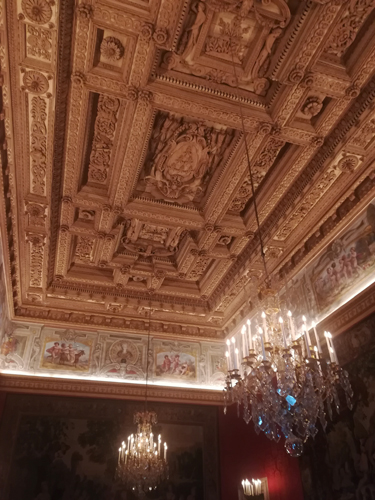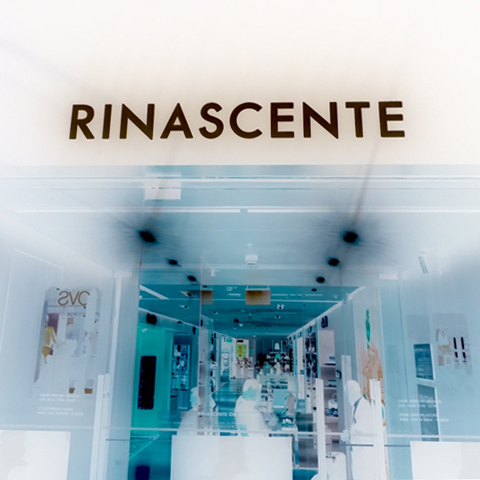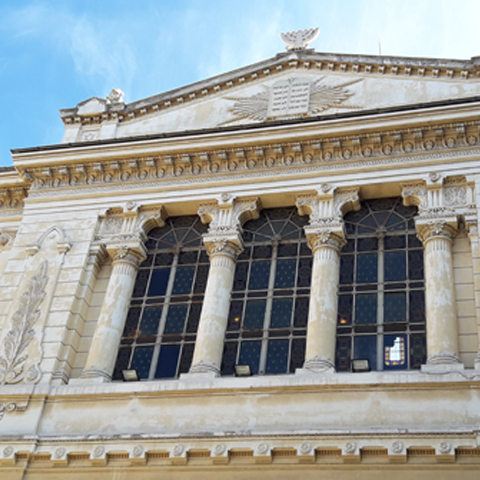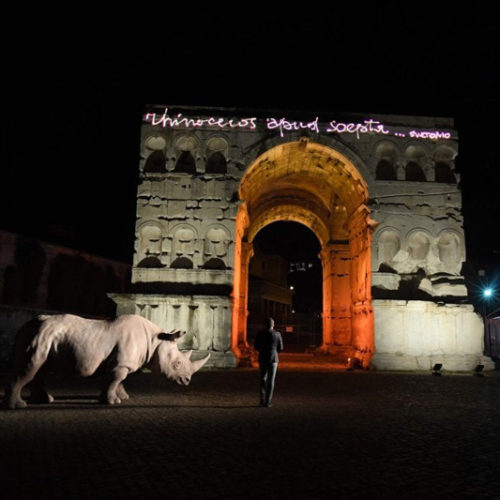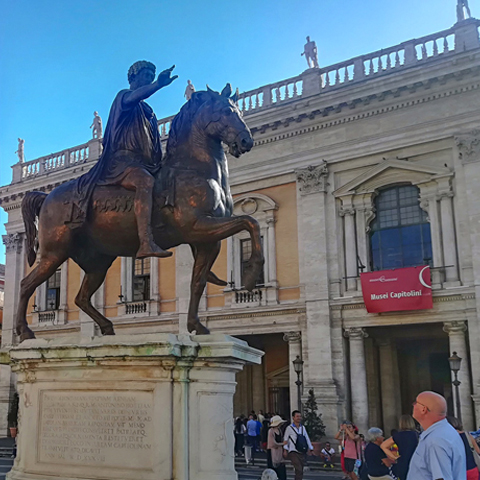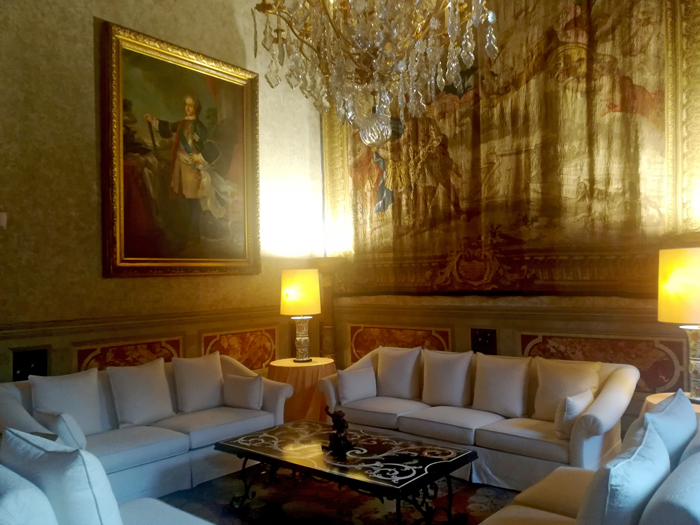
Yellow Salon
One of the constant frustrations of living in Rome is the feeling of ‘I wish I knew about that earlier’. In case you feel like this due to the contents of this article, I apologize in advance! One of the past weekends (22 and 23 September) was the designated weekend for the European Heritage Days in Rome. This initiative is the most widely supported cultural event shared by the citizens of Europe and is held in September each year when numerous monuments and sites open their doors to the public, allowing them to enjoy free visits and to learn about their shared cultural heritage. Appropriately, the title Italy gave to its European Heritage Days was ‘The Art of Sharing’ and one of the highlights of the planned events was Sunday’s opening of Palazzo Farnese.
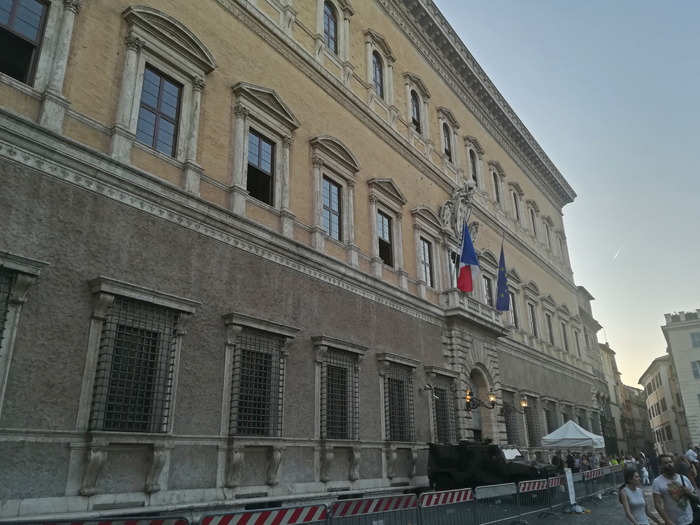
Façade of Palazzo Farnese
Palazzo Farnese is one of those buildings that I have walked past a thousand times – it is right next to Campo de’ Fiori, but a world away from the slightly rowdy feel of the fruit market. It is situated in a wide and open feeling square (Piazza Farnese) with its instantly recognizable ‘bath tub’ fountains, attributed to Giacomo Rainaldi. The most imposing building is the palazzo itself, which you see as soon as you enter the square with Campo de’ Fiori behind you – it is always guarded by the army as it is also the French Embassy in Italy (hence the French flag flying outside it!)
- Farnese Crest
- Interior Ceiling
The palazzo was first designed in 1517 for the Farnese family, one of the oldest Italian noble families, but when Alessandro Farnese became Pope Paul III in 1534, his ideas changed, along with his status, and the building had to become much grander in size and scale! Some of the most famous and influential architects of the 16th century were involved in its creation, including Michelangelo although the original design was by Antonio da Sangallo the Younger. It is known locally as ‘il dado’ or the ‘dice’ or ‘cube’ due to the powerful and unapologetic impression it makes on first sight.
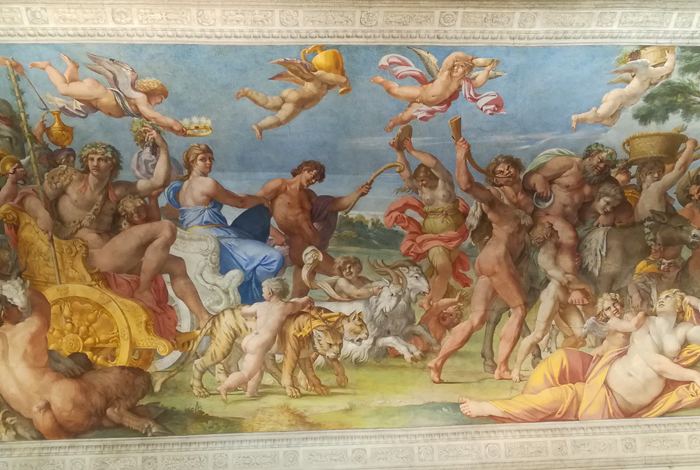
The Loves of the Gods
The must-see feature of the palazzo, however, is behind the impressive façade and in the rooms which circle the inner courtyard. In the west wing, there is the Farnese Gallery whose ceiling is covered in the breathtakingly beautiful frescoes by Annibale Carracci, titled ‘The Loves of the Gods’. This work is interesting from an art history point of view, as well as its aesthetic appeal. It was created in 1597 to 1608 by Carracci and his workshop and marked a significant shift from the 16th century Mannerism style to the 17th century Baroque and Classicism style. The various panels show a dizzying array of the classical Greek and Roman gods but the most famous is the central panel where ‘The Triumph of Bacchus and Ariadne’ is portrayed – such is the admiration for this entire work of art, it has been compared to the ceiling of the Sistine Chapel for its technique and richly studied characters.
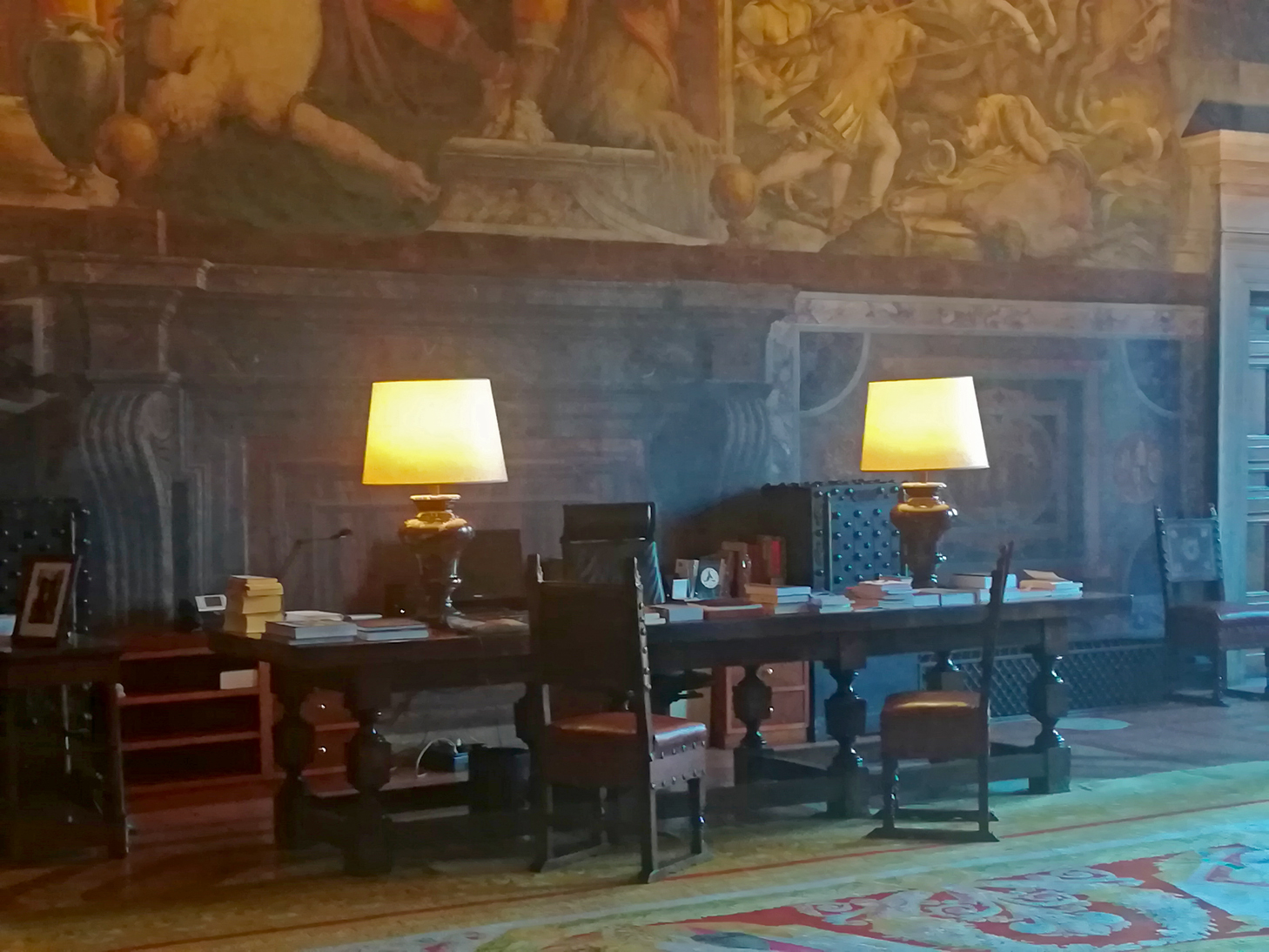
Ambassador’s Desk
The rest of the palazzo is equally impressive – especially the beautifully decorated reception rooms for the French Ambassador’s various guests and his office where we could see his desk (with a large map of Italy next to it for quick reference)! The inner courtyard is beautifully designed with its various types of column modelled after the Teatro of Marcello and the Sala dei Fasti Farnesiani has a grandiose mural depicting Pope Paul III (Alessandro Farnese) as a man of great importance presiding over the various political machinations going on in Europe during his reign! His family was well used to being intricately involved in the different spheres of influence – his sister Giulia, was the mistress to the previous pope (Rodrigo Borgia – Pope Alexander VI) and established herself as a political maneuverer, using her position to get her brother appointed cardinal, allowing him to eventually become pope.
Palazzo Farnese is not the easiest of sightseeing destinations to get into. It is open to the public only twice a year – once in September for the European Heritage Days and again on 14th July to mark Bastille Day. However, you are able to book a guided tour – but you are strongly recommended to do this weeks, if not months, before you visit. However, the chance to see one of the most beautifully decorated Renaissance palaces should be missed and I fully recommend you take the opportunity to visit it!
How to get there:
Nearest tram stop: Line 8 (stop: Arenula/Cairoli)
Nearest bus: 30, 40, 46, 62, 64, 70, 87 (stop: Via Torre Argentina, Rinascimento etc). Anywhere near Largo Argentina, or Corso Vittorio Emanuele is fine. It is about a 5 minute walk from these stops.
To book a visit: https://www.inventerrome.com/index.php/en/visiting-palazzo-farnese

